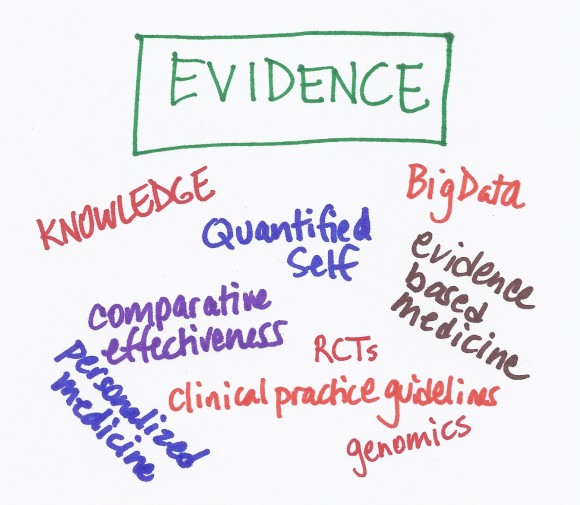The Evidence
 Before I went to medical school, I studied biology in college and did laboratory research. One of the reasons I went into medicine was that I liked science but like most doctors, I didn’t understand the science as well as I thought I did. The scientific literature – the studies that have been done to figure out which treatments work and which ones don’t – is what we call the evidence.
Before I went to medical school, I studied biology in college and did laboratory research. One of the reasons I went into medicine was that I liked science but like most doctors, I didn’t understand the science as well as I thought I did. The scientific literature – the studies that have been done to figure out which treatments work and which ones don’t – is what we call the evidence.
In many ways, the evidence is the most challenging part of the Care Triad.
During my medical training, I remember reading individual scientific papers and doing exactly what they said. That approach may be OK when there is only one study that has been done to look at a particular treatment. But once there are many studies available, you need to look at all of them and figure out what the totality of the research is saying. You might look at one study that says a particular treatment works but there may be 9 other studies that say the same treatment is useless. Focusing on one study is called “cherry picking” and lots of doctors do it without realizing it.
The problem is that thousands of new studies are published each day. How can a practicing doctor stay up-to-date? How can he or she draw conclusions across all of these studies? Doctors need help from people and information products to summarize all the research. But there are other challenges. The truth is that in most clinical situations, the right studies haven’t been done and there is often no good evidence to guide the decision. In those cases, the experience of the doctor and the wishes of the patient become most important.
If doctors have trouble understanding the evidence, how can a patient do so? In order to make an informed decision the patient needs to understand the evidence but most studies are difficult for a patient to access and then comprehend. News stories about scientific research are often misleading (see HealthNewsReviews.org). We’re also learning that positive results are more likely to get published than negative results and that many studies are flawed. So there’s also a problem with bias in the medical literature.
In addition to finding better ways to summarize and communicate the evidence to doctors and patients, we need to look for new sources of evidence – how treatments work in real people in the real world. There are lots of movements that address evidence such as “big data”, evidence based medicine, quantified self, comparative effectiveness research, practice guidelines, etc. These names are confusing and overlapping. I’ll try to avoid jargon and focus on how both doctors and patients can understand the existing evidence better and how we can open our eyes to new types of evidence. I’m especially interested in how we can use online patient communities to help patients learn from the experiences of others and ways patients can use tools to track their own health and responses to treatments. These types of innovations along with advances in genetics are beginning to make it possible to tailor treatments to an individual patient rather than relying on studies that draw conclusions about the “average” patient.
5 thoughts on “The Evidence”